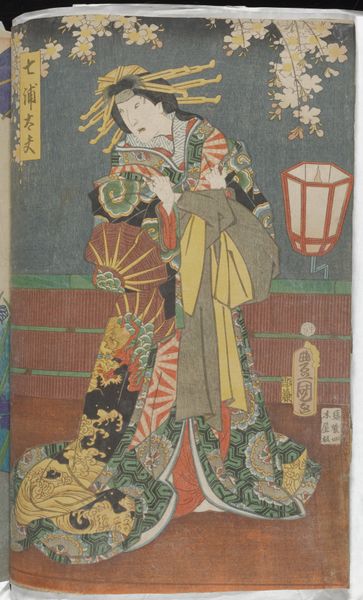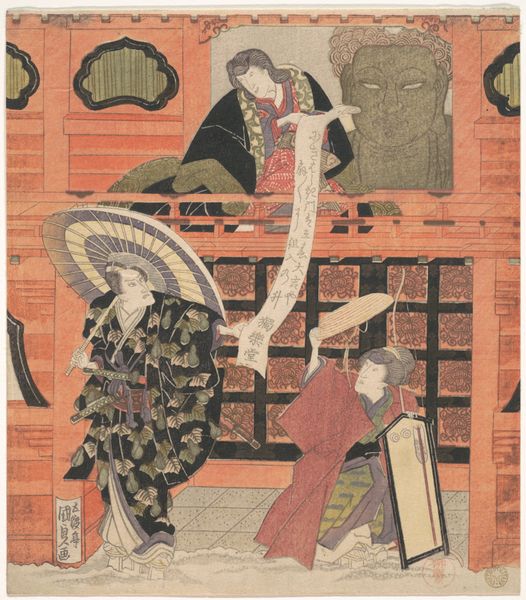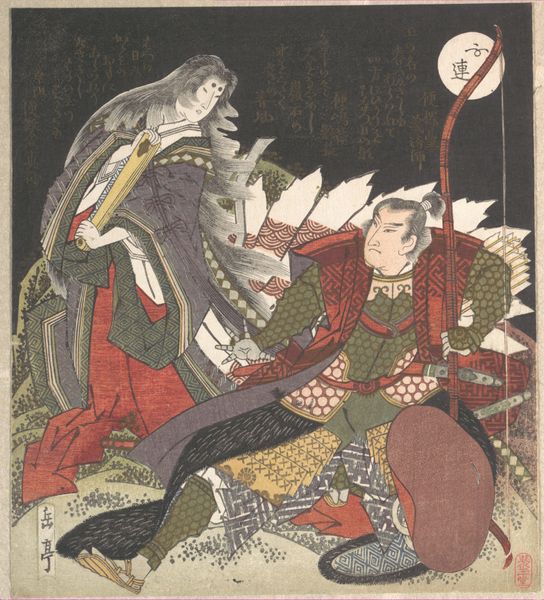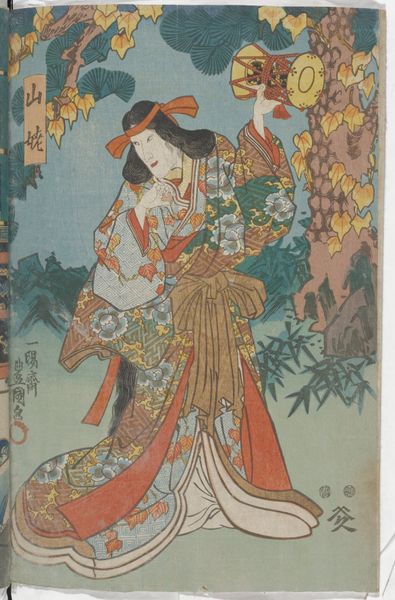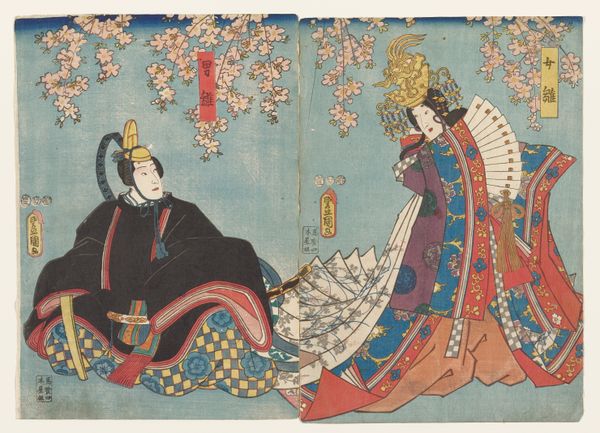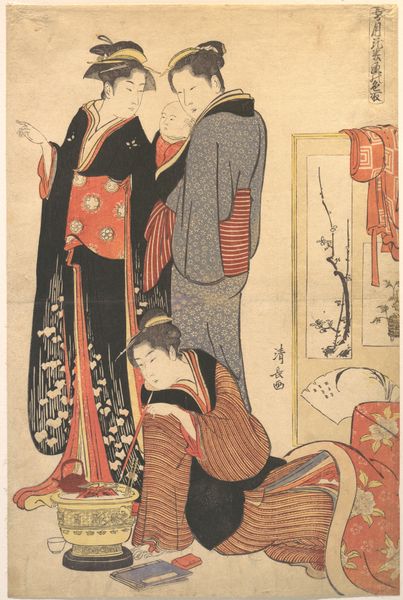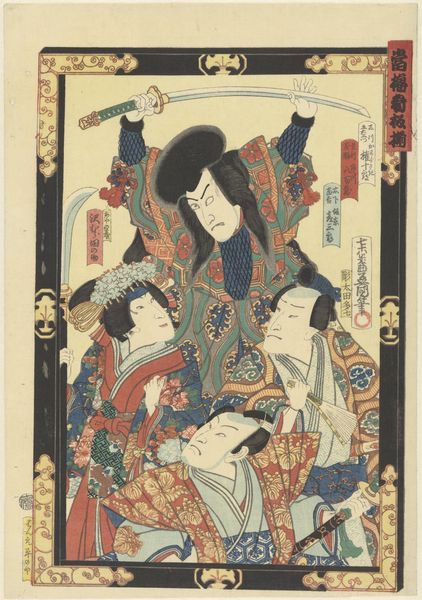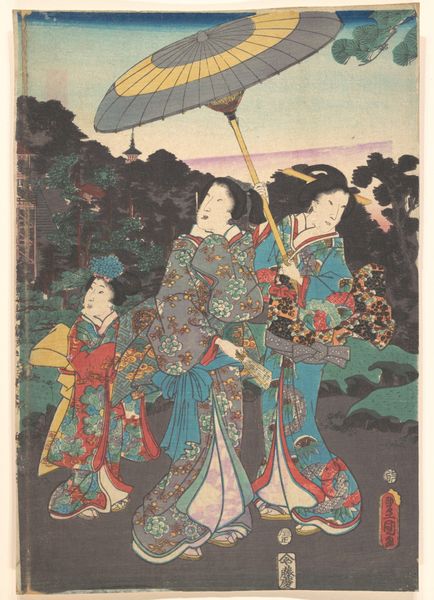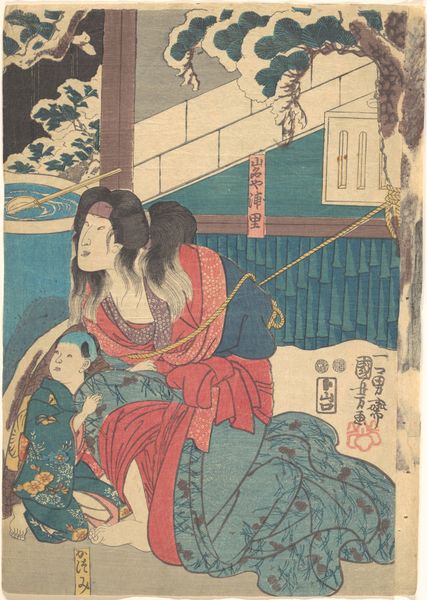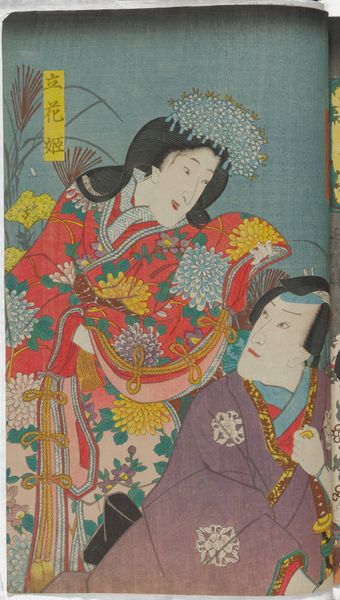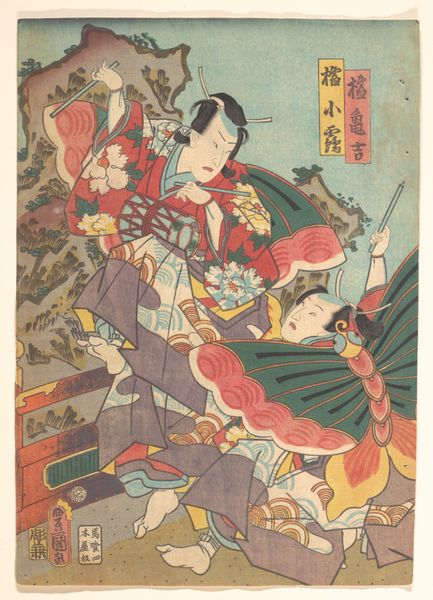
print, woodblock-print
#
portrait
# print
#
asian-art
#
ukiyo-e
#
figuration
#
woodblock-print
#
genre-painting
Dimensions: Image: 13 1/2 × 9 1/2 in. (34.3 × 24.1 cm)
Copyright: Public Domain
Curator: This lovely woodblock print, known simply as "Print", was created by Utagawa Kunisada sometime between 1800 and 1865. It resides here with us at the Metropolitan Museum of Art. Editor: Immediately, I'm struck by the vivid blue backdrop. It almost feels like wallpaper, clashing yet harmonizing with the figures. It creates a very domestic, yet also somewhat surreal space. Curator: Indeed. The patterns on the screen behind the figures are quite meaningful. Note the repeated use of the swastika. It is a Buddhist symbol representing good fortune and well-being— a cultural element frequently misconstrued in later Western history. Editor: So its presence isn’t a historical accident. Given Kunisada's use of symbolism, how might we interpret the differing sizes and placement of the women in relation to each other? The elder appears rather stoic and is positioned more vertically, almost formally, whereas the younger is lower, holding what appears to be some offering, which I presume is an object to serve the elder? Curator: Yes, you observe an important power dynamic through pose and composition. It seems highly staged; yet perhaps Kunisada is commenting on or reinforcing class hierarchies inherent within domestic Japanese spaces during that era. Utagawa's works can reflect evolving roles or fixed cultural behaviors that mark such moments of intergenerational relations and respect. Editor: Exactly, which may extend outside familial contexts into, say, workplaces or other formalized settings— the print possibly mirrors rigid expectations within complex societal structures. Are these social performances of expected propriety also reflected in elements of costume and the highly stylized facial expressions of both figures? The very limited color palette, so striking in its constraint, seems very deliberately coded. Curator: Precisely! The rich and limited color choices may further codify status— consider red in particular. Through its symbolism, this specific Ukiyo-e genre scene reveals the intricate layers of expectation within its composition, where domestic settings are subtly presented yet heavily imbued with meaning through symbols both seen and assumed. Editor: It does leave you contemplating what's shown and, more powerfully, what has deliberately been left unseen in defining identities from that moment. Thanks for bringing it to light. Curator: Thank you— uncovering these layered narratives deepens our own experiences of an art moment suspended between historical eras, bridging culture into contemporary consciousness with nuanced resonance!
Comments
No comments
Be the first to comment and join the conversation on the ultimate creative platform.
